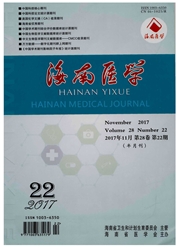

 中文摘要:
中文摘要:
目的建立并验证头花蓼提取物血清药理学研究方法。方法以大鼠为含药血清的供体,MTT法确定空白血清及含药血清对小鼠单核巨噬细胞(RAW264.7细胞)活性的影响,采用10 ng/m L脂多糖(LPS)建立RAW264.7细胞炎症损伤模型,Griess试剂法检测细胞上清液中一氧化氮(NO)的释放量,以确定体系中的血清添加量和大鼠取血时间。以NO、TNF-α为指标测定含药血清的抗炎活性。结果大鼠按人临床用药等效剂量的27倍给予头花蓼水提醇沉提取物,与模型组相比,体系中加入1.5%(V/V)末次给药后90 min的含药血清能够显著抑制LPS诱导的RAW264.7细胞释放NO(P<0.001)。同时,该方法制备的含药血清能够显著抑制细胞释放NO和TNF-α(P<0.01或P<0.001)。结论本实验条件下制备的头花蓼含药血清具有明显的抗炎作用,该血清药理学方法可用于头花蓼提取物含药血清药效及作用机制研究。
 英文摘要:
英文摘要:
Objective To establish and validate a serum pharmacological method for Polygonum capitatum ex-tract. Methods Rats were used as the provider to prepare the drug-containing serum. Cell viability was detected to de-termine the effect of blank and drug-containing serum on murine mononuclear macrophage cells (RAW264.7 cells) by MTT assay. The inflammatory cell model was produced by 10 ng/mL lipopolysaccharide (LPS) treated RAW264.7 cells. Nitric oxide (NO) production was detected by the Griess assay to determine the suitable concentration of serum in cul-ture system and the time of sample collection. NO and TNF-αwere selected to validate the anti-inflammatory activity of the drug-containing serum. Results Rats were given oral administration of protein-free water extract of Polygonum capitatum (PCWEP) by 27 times dose of adults. 1.5%(V/V) serum after 90 min of the last administration could signifi-cantly inhibit the release of NO in LPS-induced RAW264.7 cells compared with the model group (P<0.001). Drug-con-taining serum prepared by this method could significantly inhibit the productions of NO and TNF-α in RAW264.7 cells (P<0.01, P<0.001). Conclusion Drug-containing serum prepared by this method possesses obvious effect of an-ti-inflammatory in macrophage cells, and this serum pharmacological method can be applied to evaluate the pharmaco-logical effect and mechanism of PCWEPS.
 同期刊论文项目
同期刊论文项目
 同项目期刊论文
同项目期刊论文
 Identification and Characterisation of Phenolics in Polygonum capitatum by Ultrahigh-Performance Liq
Identification and Characterisation of Phenolics in Polygonum capitatum by Ultrahigh-Performance Liq Protective effects of fractions from Pseudostellaria heterophylla against cobalt chloride-induced hy
Protective effects of fractions from Pseudostellaria heterophylla against cobalt chloride-induced hy Evaluation of the impact of Polygonum capitatum, a traditional Chinese herbal medicine, on rat hepat
Evaluation of the impact of Polygonum capitatum, a traditional Chinese herbal medicine, on rat hepat 期刊信息
期刊信息
